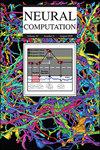Multimodal and Multifactor Branching Time Active Inference
IF 2.1
4区 计算机科学
Q3 COMPUTER SCIENCE, ARTIFICIAL INTELLIGENCE
引用次数: 0
Abstract
Active inference is a state-of-the-art framework for modeling the brain that explains a wide range of mechanisms. Recently, two versions of branching time active inference (BTAI) have been developed to handle the exponential (space and time) complexity class that occurs when computing the prior over all possible policies up to the time horizon. However, those two versions of BTAI still suffer from an exponential complexity class with regard to the number of observed and latent variables being modeled. We resolve this limitation by allowing each observation to have its own likelihood mapping and each latent variable to have its own transition mapping. The implicit mean field approximation was tested in terms of its efficiency and computational cost using a dSprites environment in which the metadata of the dSprites data set was used as input to the model. In this setting, earlier implementations of branching time active inference (namely, BTAIVMP and BTAIBF) underperformed in relation to the mean field approximation (BTAI3MF) in terms of performance and computational efficiency. Specifically, BTAIVMP was able to solve 96.9% of the task in 5.1 seconds, and BTAIBF was able to solve 98.6% of the task in 17.5 seconds. Our new approach outperformed both of its predecessors by solving the task completely (100%) in only 2.559 seconds.多模态和多因素分支时间主动推理
主动推理是最先进的大脑建模框架,可以解释各种机制。最近,人们开发了两个版本的分支时间主动推理(BTAI),以处理在计算时间范围内所有可能策略的先验时出现的指数级(空间和时间)复杂性。然而,这两个版本的 BTAI 仍然受到与被建模的观察变量和潜在变量数量有关的指数复杂性的影响。我们允许每个观测值都有自己的似然映射,每个潜变量都有自己的转换映射,从而解决了这一限制。我们使用 dSprites 环境测试了隐式均值场近似的效率和计算成本,在该环境中,dSprites 数据集的元数据被用作模型的输入。在这种情况下,分支时间主动推理的早期实现(即 BTAIVMP 和 BTAIBF)在性能和计算效率方面都不如均值场近似(BTAI3MF)。具体来说,BTAIVMP 能在 5.1 秒内解决 96.9% 的任务,而 BTAIBF 能在 17.5 秒内解决 98.6% 的任务。我们的新方法仅用了 2.559 秒就完全(100%)解决了任务,表现优于前两者。
本文章由计算机程序翻译,如有差异,请以英文原文为准。
求助全文
约1分钟内获得全文
求助全文
来源期刊

Neural Computation
工程技术-计算机:人工智能
CiteScore
6.30
自引率
3.40%
发文量
83
审稿时长
3.0 months
期刊介绍:
Neural Computation is uniquely positioned at the crossroads between neuroscience and TMCS and welcomes the submission of original papers from all areas of TMCS, including: Advanced experimental design; Analysis of chemical sensor data; Connectomic reconstructions; Analysis of multielectrode and optical recordings; Genetic data for cell identity; Analysis of behavioral data; Multiscale models; Analysis of molecular mechanisms; Neuroinformatics; Analysis of brain imaging data; Neuromorphic engineering; Principles of neural coding, computation, circuit dynamics, and plasticity; Theories of brain function.
 求助内容:
求助内容: 应助结果提醒方式:
应助结果提醒方式:


